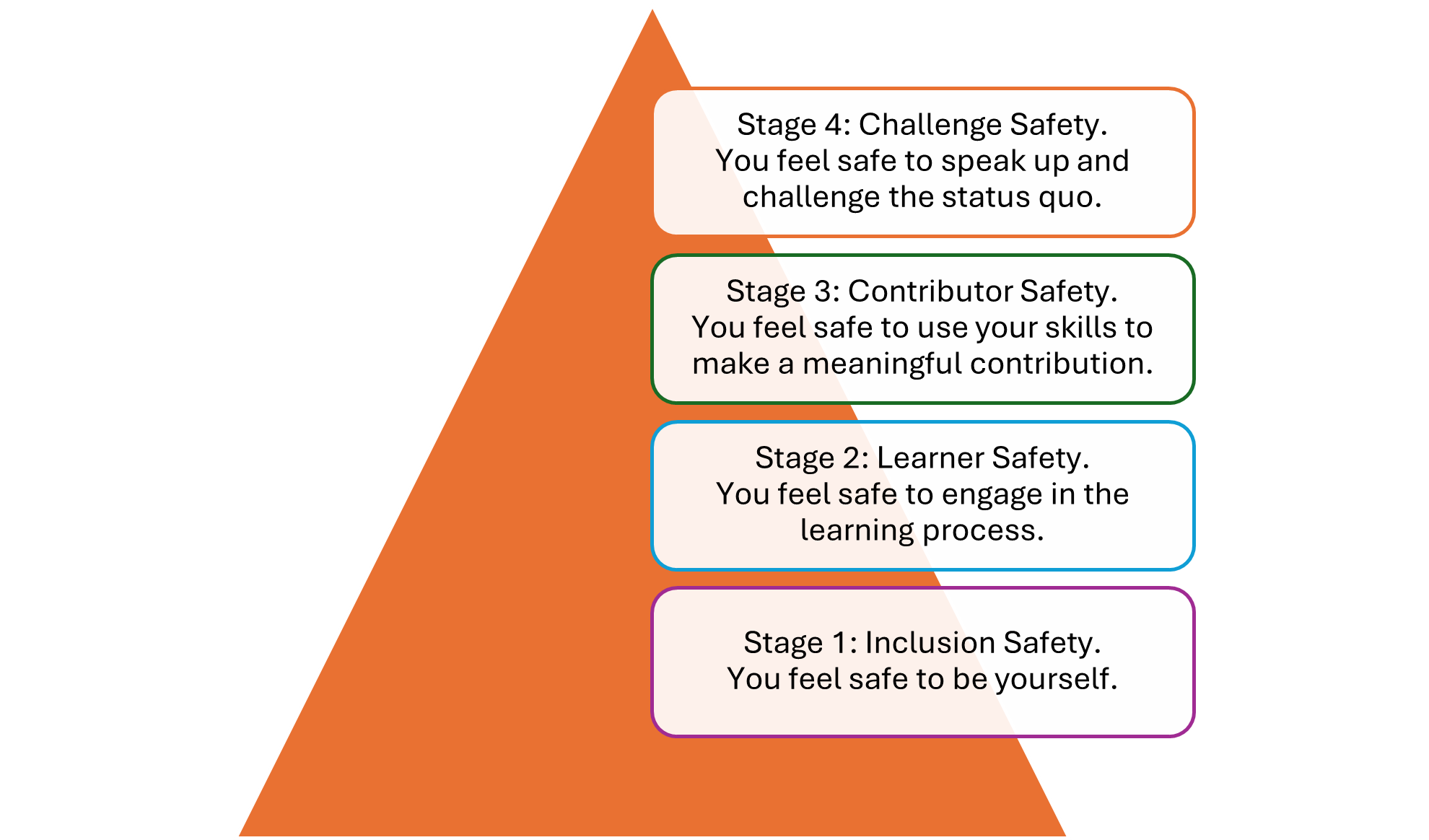
Safety
Comments: No Comments
Safety Focus
Workplace safety and health goes beyond the physical. A strong safety culture focuses on the whole person—and that includes ensuring psychological safety.
What is psychological safety?
Psychological safety is the shared belief that it is okay to take risks, express concerns and ideas, ask questions, speak up, and admit mistakes in the workplace without fear of being punished or humiliated. According to Amy Edmondson, PhD, Professor at the Harvard Business School, psychological safety is “felt permission for candor.” It allows employees the freedom to brainstorm, challenge the status quo, share feedback, take calculated risks, be vulnerable, and work through disagreements together.
Psychological safety brings in four different dimensions:
- Willingness to help: Employees are comfortable asking for help and trust that their colleagues are willing to provide it.
- Inclusion and diversity: Employees feel included and like their diverse experiences are accepted and valued.
- Attitude to risk and failure: Employees view mistakes as opportunities to learn and grow versus failures to be punished.
- Open conversation: Employees perceive conversations as open and candid; they feel safe speaking up and contributing to discussions.
Psychological safety develops over time. As organizations build greater psychological safety, they move through the following stages:

Why is psychological safety important?
Psychological safety is a critical concept for building effective teams and, many would argue, a critical concept for encouraging workplace innovation and success. According to the Center for Creative Leadership research, teams with high degrees of psychological safety report higher levels of performance and lower levels of interpersonal conflict. This is because employees who feel their workplace is psychologically safe are more willing to engage in behaviors that contribute to greater organizational innovation, including:
- Taking appropriate, thoughtful risks.
- Admitting, discussing, and learning mistakes.
- Openly confronting concerns and tough issues.
- Seeking help and feedback from others.
- Trusting other team members and believing they are there to support them.
- Trusting that they are a valued member of the team whose voice matters.
As psychological safety matures in a workplace, the benefits become more prevalent:
- More engaged team members. When employees can speak up without fear of retribution and feel like their contributions matter, they become more motivated.
- Better and more innovative decision-making. Diverse people voicing their opinions and concerns leads to more diverse perspectives being considered, providing the opportunity for innovation and more informed decision-making.
- A culture of continuous learning and improvement. Teams and individuals grow by sharing mistakes and turning them into opportunities to learn and make changes.
When an organization does not embrace psychological safety, there can be negative impacts on the overall performance of the organization and employee well-being, including stress, burnout, and turnover.
How do I create a psychologically safe workplace?
According to Edmondson, “Leaders must prioritize a culture of learning and innovation for team members to be comfortable speaking up, taking risks, and sharing information…It emerges with effort and curiosity and care.”
A lot goes into creating a psychologically safe environment—and building this culture takes time, focused attention, and good management practices, including the following:
- Make psychological safety a priority. Talk openly with your team about the importance of creating a psychologically safe workplace. Answer questions, dispel misconceptions, explain benefits, and connect it to the higher purpose of the organization innovation.
- Model the behaviors you want to see. Lead by example. Show how to raise concerns and tough issues in a constructive manner. Admit your own mistakes so others feel free to do so; normalize vulnerability.
- Facilitate everyone speaking up. Show genuine curiosity, be open-minded, encourage honesty, and actively listen when someone is willing to challenge the status quo. Make an intentional effort to promote dialogue by asking open-ended questions to get people to feel comfortable speaking up.
- Establish norms for how mistakes are handled. Use mistakes as opportunities for growth; encourage learning from failure by building lessons learned into every project. Do not punish mistakes, experimentation, and reasonable risk-taking.
- Be supportive. Show you are willing to explore out-of-the-box ideas. Embrace productive conflict. Promote constructive debate. Work to resolve conflicts productively. Employ a zero-tolerance policy for any employee deliberately undermining the efforts of another employee.
- Celebrate wins. Acknowledge what is going well, share credit, applaud people’s efforts, and appreciate thoughtful risk-taking. Publicly recognizing and celebrating the unique skills/talents of each team member will build trust and mutual respect.
- Continually reassess. It requires ongoing work and effort to keep your organization psychologically safe. Solicit feedback and track whether you are achieving the results you want.
How do I assess my workplace’s psychological safety?
Edmondson has created a seven-question survey that can be administered anonymously to measure your workplace’s psychological security:
- If you make a mistake on this team, will it be held against you?
- Are the members of this team able to bring up problems and tough issues?
- Do members on this team sometimes reject other members for being different?
- Is it safe to take a risk on this team?
- Is it difficult to ask other members of this team for help?
- Would anyone on the team deliberately act in a way that undermines efforts?
- Working with members of this team, are unique skills and talents valued and utilized?
Psychological safety is not about being nice. Many polite workplaces are not considered psychologically safe, because there is no opportunity for candor and people feel silenced by politeness. It is also not about feeling comfortable all the time. Yes, employees should feel comfortable speaking up, but pointing out mistakes, expressing concerns, and sharing opinions can feel very uncomfortable. Being vulnerable feels risky to most. A psychologically safe culture allows employees to take these risks in a safe environment without negative interpersonal consequences.
More information can be found on psychological safety at the following websites:
